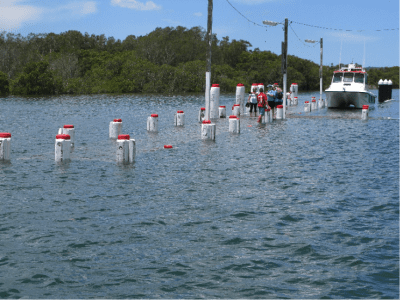King tides and extreme events

It was predicted that on 6 December last year and 2 January 2018 the east coast would experience very high spring tides (often referred to as “king tides”). Tide tables based on astronomical pull forces of the moon and sun around these dates exert maximum gravitational force on our coastal waters. For instance, for 6 December, 2017, the predicted tide at Fort Denison was 2.01 above the base level termed Indian Spring Low Water (ISLW). On 2-3 January the prediction was slightly higher at 2.07. This was the time of the perihelion when the Earth is at its closest point in its orbit to the Sun (147,097,193km). These factors are included in tidal predictions. Yet on both occasions the measured water level at Fort Denison reached a remarkable 2.28m above ISLW. The weather at the time was relatively calm.
Tidal measurements at Fort Denison constitute one of the longest records in the world (120 years). Over this period maximum recorded levels have exceeded 2.28m on only three occasions: 2.40 in 1974 (25 May); 2.35m on 27 April, 1990; and 2.32m in 1956 (10 June). Thus these two summer peaks are the fourth highest. Of note is that fifth and sixth highest at 2.27m occurred in June and August in 1984 and 2001 respectively. It is quite extraordinary to have had what are near record measured water levels in summer months especially as we know that on some of those past events such as May 1994 coincided with very intense storms (east coast lows) in the Sydney region. It is well known that storms just off the coast associated with high onshore winds can drive water levels higher, a storm surge, as occurred in 1974 when such a storm coincided with a predicted astronomical high tide.
The December 2017 event may be linked to the passage of an intense low pressure system moving from west to east across Bass Strait into the Tasman Sea at that time. Cold fronts can help elevate water levels and promote the movement of what are termed coastal trapped waves along the NSW coast. It is possible that a component of the 27cm difference between the measured water level and predicted tide was due to a surge/trapped wave effect. In contrast, the early January event could not be related to a storm system, though the presence of a low pressure system might have been a contributory factor.
These are all important facets in understanding the nature of dynamic physical processes that operate independent of the tidal forces to push water levels higher or lower under certain circumstances. Some of these processes are short-lived and more localised operating on timescales of hours to days (such as storm surges, atmospheric pressure, coastal trapped waves) whilst others can persist for several months (such as ocean currents, El Nino and la Nina events) affecting regional scale water masses.
We know that sea level has risen by about 12-22cm globally over what is generally termed the “Instrumental” era (from around 1870) thus elevating the base position of ISLW at the Fort Denison site. But this is factored into predictions. Climate change science forecast these rises to continue well into the future dependant on greenhouse gas emissions.
So the high fair weather king tides of this summer cannot be directly attributed to sea level rise. Another factor is the on-going warming and dynamics of the East Australian Current (EAC). Higher water temperatures in this meandering water mass will be associated with higher water levels where those warm waters impinge on the coast. It is not clear at this stage whether the EAC movements were a cause in the summer king tide anomalies. Therefore we cannot be sure of the cause but we can expect that such extreme tides are likely in future.
New NSW Coastal legislation (Coastal Management Act 2016) incorporates the need to understand potential more frequent occurrence of extreme climate events on coastal lands and adjoining waters. Tidal inundation is recognised as one of the seven coastal hazards that must be considered in future coastal planning and management. There was considerable media coverage of both summer’s king tides. Phil Watson of OEH collects photos from various sources that show the extent of tidal inundation. This will be invaluable records as we continue to assess impacts on infrastructure and property. There is also a Witness King Tides website where information and photos can be viewed and shared.
More research will now be needed to disentangle possible causes of these fair weather extreme events from those attributed to storms especially given continued warming of atmosphere and oceans.
Bruce Thom
(With thanks to Phil Watson, NSW Office of Environment and Heritage)
Words by Prof Bruce Thom. Please respect the author’s thoughts and reference appropriately: (c) ACS, 2018, posted 31 January 2018, for correspondence about this blog post please email austcoastsoc@gmail.com
#102


 Update: 2018 Coast to Coast Conference – Hobart, April 16 -20
Update: 2018 Coast to Coast Conference – Hobart, April 16 -20